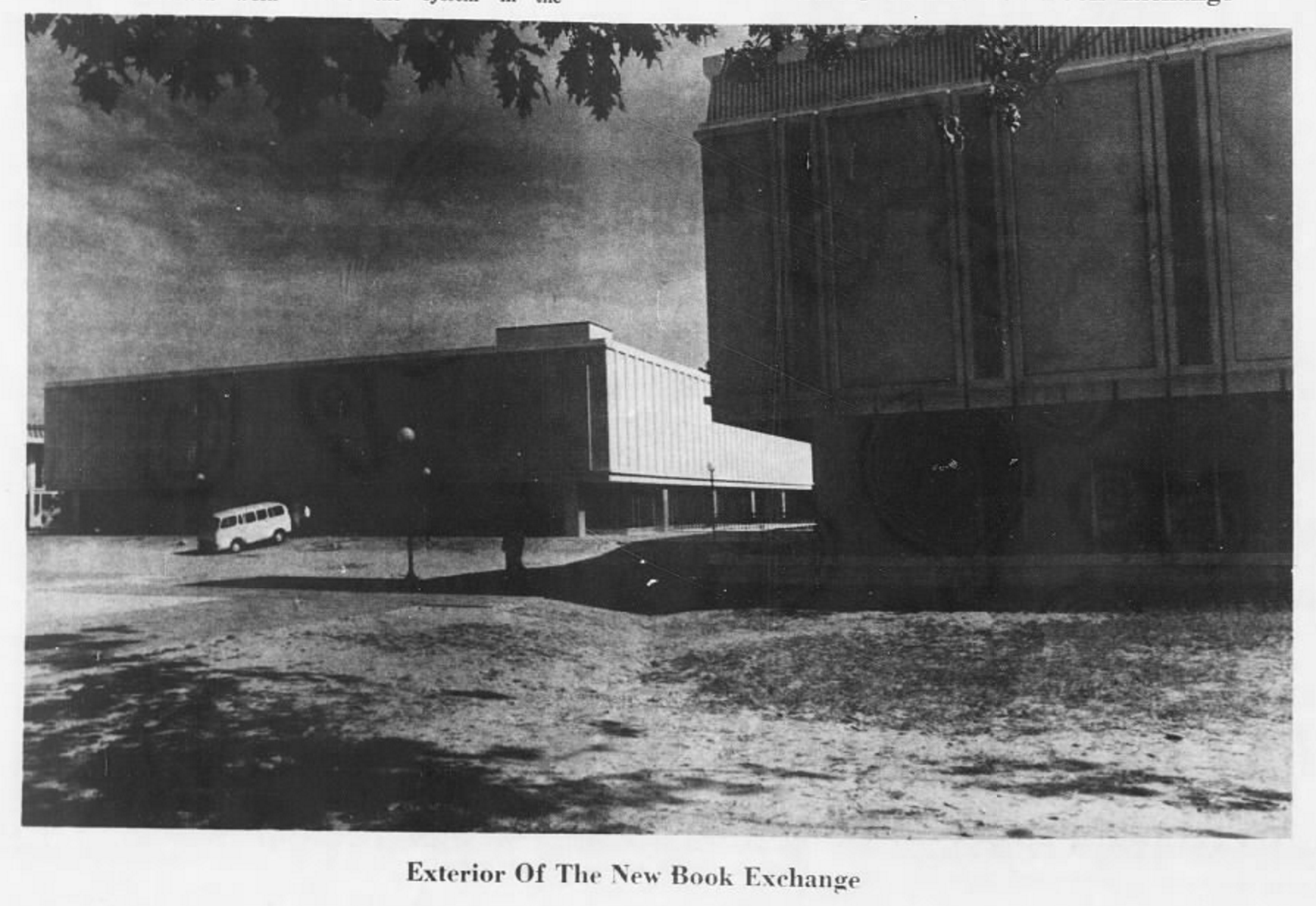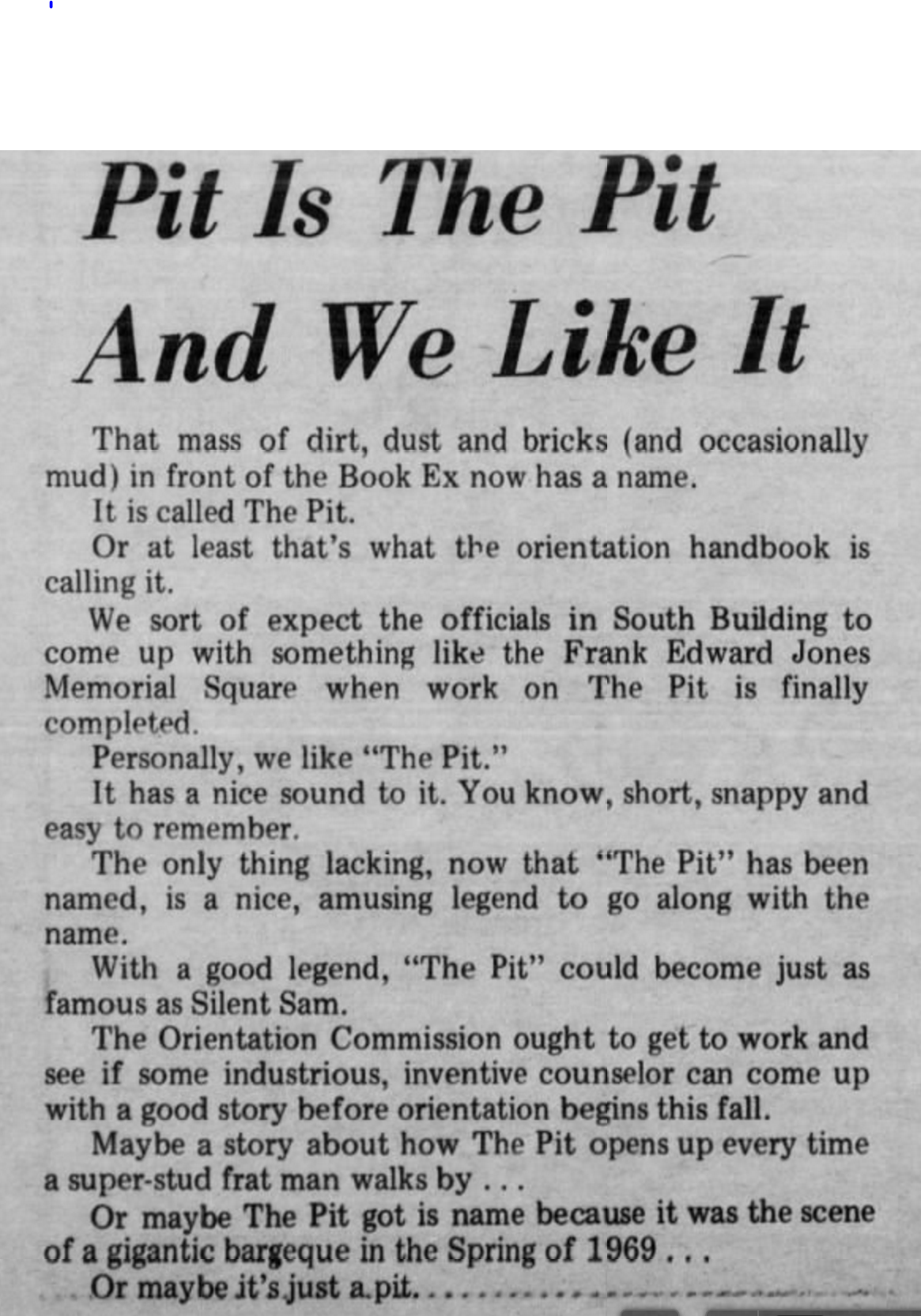
Photo via UNC Admissions
Anyone who has walked around the campus of the University of North Carolina at Chapel Hill, whether strolling past famous examples of neoclassical architecture or hurrying to class past institutional buildings, has at least heard of The Pit.
The unofficial center of UNC and beloved fixture of campus life, where The Pit now sits was once home to the primary athletic field on campus. Emerson field, completed in 1916, was the original home to football, baseball and track events on campus. Carolina’s football program quickly outgrew the field and moved to Kenan Stadium upon its completion in 1927, but track events and baseball games continued to be held at Emerson Field until 1935 and 1965, respectively.

Daily Tar Heel, 17 September 1968
In 1967, Emerson Field was cleared and construction began on UNC’s student union, bookstore and undergraduate library. As construction on new campus additions carried on, a problem developed: a large mud pit. Construction had made a wide and shallow hole in front of the bookstore, and the combination of moved earth, foot traffic and rain resulted in what was called a “man-made mud crater” by the Daily Tar Heel.
The June 26 edition of the DTH in 1969 discussed how the “vast, dusty pit in front of the UNC Book Exchange has been the subject of much campus inquiry recently. The Campus and Grounds Department has designed, and begun construction on a sunken brick patio surrounded by brick steps. Two shade trees will be planted in the center.”

Daily Tar Heel, 14 August 1969
When it came time to name the proposed structure, students and staff seemingly expected something grand and sweeping, perhaps a memorial to a notable alumnus or a piece of North Carolina history. But the August 14 issue of the DTH in 1969 confirmed that the orientation handbook was simply calling the courtyard “The Pit.”
With a name like that, the DTH also suggested some potential Pit legends, such as how “The Pit opens up every time a super-stud frat man walks by” or how the sunken bricks got their name being “the scene of a gigantic barbeque.”
Sometimes, though, truth is endearing and punchy as-is. “The Pit” is just as good a name as any other, and better than most.
If you’re interested in learning more about the history of The Pit, UNC or Chapel Hill in general, check out UNC blogs and History on The Hill

